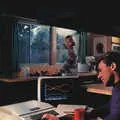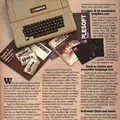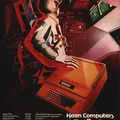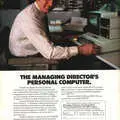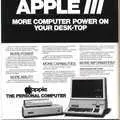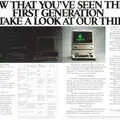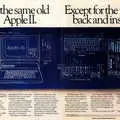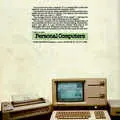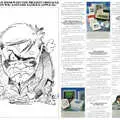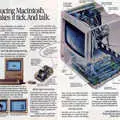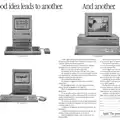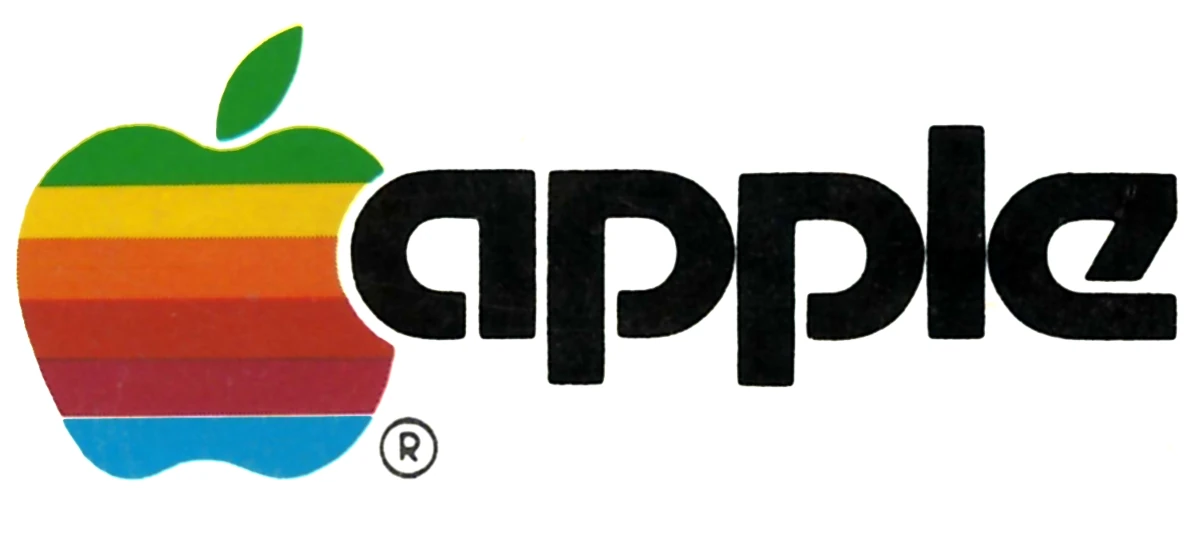
Apple Advert - May 1984
From Creative Computing
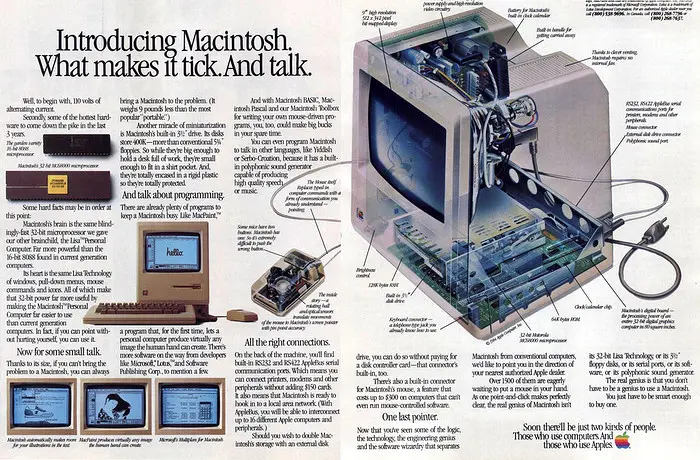
Introducing Macintosh. What makes it tick. And talk.
Famously introduced by an Orwellian Ridley Scott-directed advert at the 1984 Super Bowl - shown only once - and billed by Steve Jobs as "the fastest and most powerful computer ever placed in the hands of a large number of people"[1], the Apple Macintosh was a follow-up to the failed Lisa, which this advert[2] refers to as "Lisa Technology".
It's perhaps not surprising that the Lisa didn't do that well - it retailed at launch for £9,775[3], including VAT, in 1983 - an eye-watering £43,100 in 2025 money.
The Macintosh, set to retail at launch for a more realistic $2,495 (about £7,020), was largely built upon influential work seen on the Xerox Alto, developed in 1973 at Xerox's Palo Alto Research Center (PARC), and became the first mass-market machine to fully realise the "WIMP" - Windows, Icons, Menus, Pointer - interface that was all the rage in the mid 1980s.
Microsoft saves Apple?
At the time of its launch, Apple was once again in financial difficulties, with some observers saying "The Mac had better be good, or else the company may not survive"[4].
However, like the Apple II before it, its typically-Apple higher price meant that it wasn't immediately successful - in 1985 it sold only 200,000 units (a market share of 2.6%), which was down from 372,000 the previous year[5].
Also like the Apple II it required a "killer app" - in this case Aldus's Pagemaker desk-top publishing (DTP) application, which by the end of 1988 had 60% of both the Mac as well as PC market[6] - to rescue it and Apple. It also helped enormously that affordable laser printers were making an appearance.
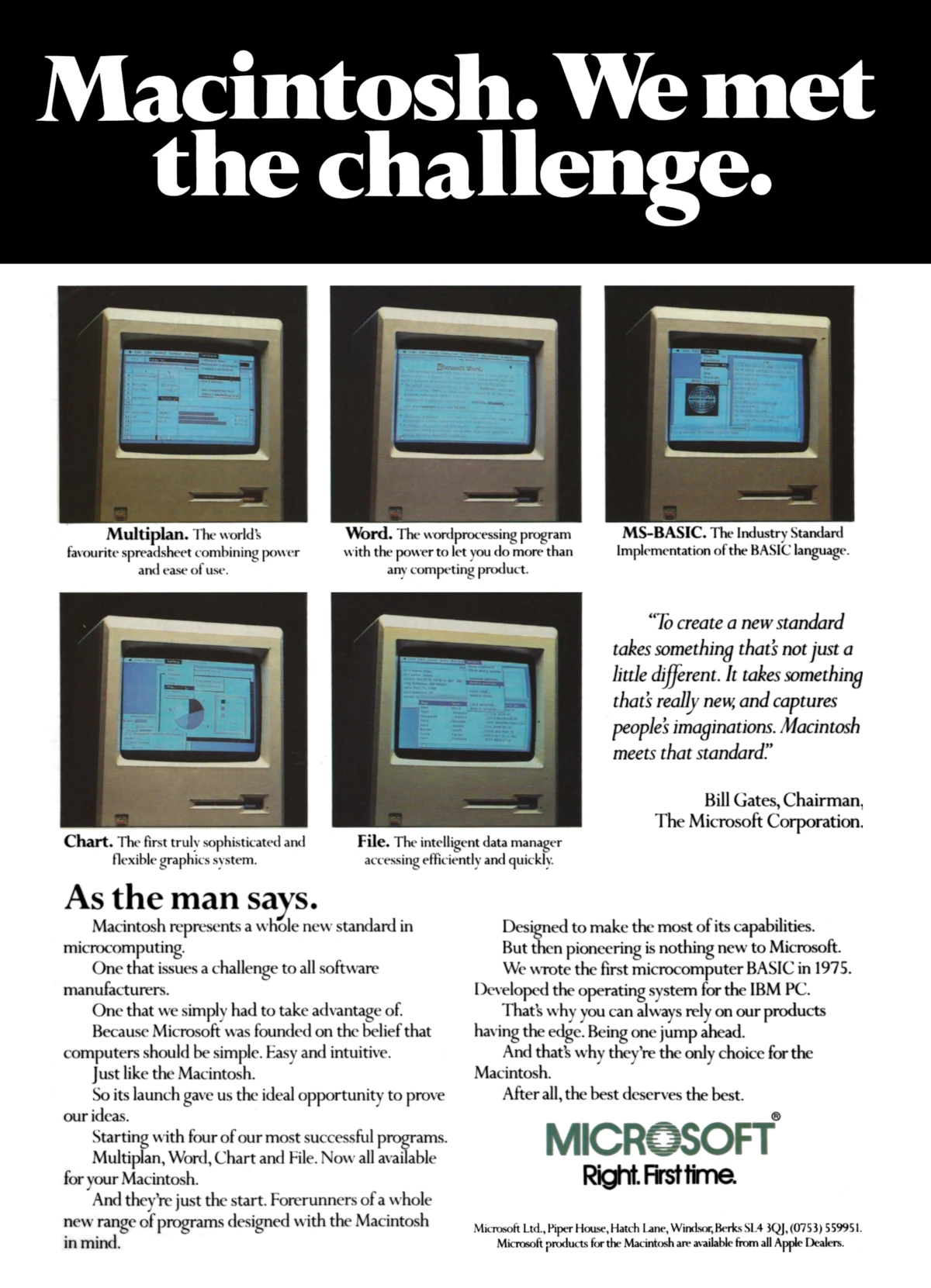
Microsoft gets in early with Mac versions of several of its products, including the word-processor Word, the ubiquitous MS-BASIC programming language, and the forerunner of Excel - Multiplan. It's not just the Mac that came from PARC: the original version of Word was written by Charles Simonyi and Richard Brodie, both from Xerox PARC, where Simonyi had written the first GUI word processor, Bravo. From Practical Computing, June 1984
That's normally the accepted story of the Mac's "rescue", however there were some signs that sales had actually first started picking up thanks to the combination of the Mac and, unexpectedly, Microsoft's new spreadsheet Excel, which was said to be "a step forward in the spreadsheet world" and which at the time was available only on the Apple platform. As Guy Kewney reported in May 1986's Personal Computer World:
"Reports from Apple aren't really an objective guide, any more than the opinions of Microsoft. However, after Mac sales took a noticeable dip in the machine's second year, they are now reported to be encouragingly better - and no-one can see any real reason, other than Excel"[7].
Somewhat ironically, the Mac's ancestor - the Apple II, released in 1977 - also sold relatively slowly until the release of the first ever spreadsheet - Visicalc - in 1979.
This helped rescue Apple financially by unintentionally making the Apple II the must-have machine for accountants and small businesses, thanks to Apple's one-year exclusive licence for the spreadsheet.
Whatever the impact of Excel, the Mac eventually made DTP its own and propelled it into must-have territory for the design and publishing industry, although in doing so it spawned a whole new curse: that of the newsletter with a hundred fonts.
Delayed, and Too Slow
Apple ended up delaying the release of the Mac into the UK until June 1984. The reasons given were that it was having problems in sourcing 240V power supplies and that this had been compounded by US demand, with an Apple spokesman saying "they're selling as many as they can make in the States".
Meanwhile, on the high street it looked like Macs were everywhere, as Apple had imported a load of US machines and stuck external power-supply converters on them in order to get them working in the showrooms, thus making it look like they were far more readily available than they really were.
Apple said somewhat feebly of the delay that it "will give UK software houses time to convert their packages"[8].
Almost immediately, the Mac was found to be slow, thanks to its limited memory and disk space, and by 1985 there were already plans for a "fast Macintosh".
These were temporarily shelved in the summer of 1985 because of personnel changes - Steve Jobs in particular was struggling with John Sculley, the man he had hired from PepsiCo, who was effectively forcing Jobs to take a back seat.
One anonymous source was quoted as saying "the folks in charge don't include some whose egos were rather too involved in their work" whilst Apple itself was saying "Steve Jobs [is] taking on a more global role in new product innovations and strategies".
However, the Mac was very much Jobs' machine, so his losing control over its development effectively called a halt to the whole thing[9].
This was a problem, as the Mac needed both more speed, disk space and especially colour, in the light of competition from the Atari ST and especially Commodore's Amiga which was said to be ten times faster than the Mac even though it used the same Motorola MC68000 CPU.
Not only that but these machines were in the region of half the price of the Mac.
Also cheaper were the increasing legion of IBM PCs and its clones, which meant that in the quarter ending September 1985 it was being reported that computer retail shops in the US had increased the purchase of IBM products by 177%, largely at the expense of Apple, whose sales had fallen by 42% in the same period[10].
Meanwhile, the Apple II, which had rescued the company back in 1979 when Visicalc was released and upon which the finances of Apple were still largely dependant (in the form of the IIe and IIgs), was nearing the end of its life, particularly as its CPU - the 1975-designed 6502 - had no "big brother" to upgrade to, unlike Intel's 8088 to 80x86 upgrade path.
It couldn't multi-task reliably, could only natively address 64K of memory and had reached the design limits of any potential speed tweaks.
Mac Cobol, for a price
Apple has always been known for premium pricing, and this seems to have rubbed off on software houses eager to sell software for the new machine.
In 1985, British software house Micro Focus announced the release of MacCobol.
Personal Computer News reported that this could help sales of Apple's Mac as Apple had been having trouble convincing potential customers that the Mac was "business capable".
The possibility that this software could take existing Level II COBOL code and recompile it for the Mac's Motorola 68000, but with additional access to the Mac's graphics libraries, was of great interest but came at a price - £1,250, or about £5,020 in 2025 money[11] - not a price the average bedroom developer could afford, but then again, they probably wouldn't be developing in Cobol.
First developed in 1959, Cobol celebrated its 25th birthday in 1984 with a meeting in London of the body which was responsible for the language - the Codasyl Cobol Committee.
During this meeting a sub-committee was tasked with seeing how to come up with a standard implementation for new-fangled WIMP programs as well as for touch-screen technology that HP had introduced with its HP150 model.
This, together with improvements to screen management, was seen as vital to the survival of the language, which the committee wanted to see around for the next 25 years.
Cobol's strengths were in portability between micros and mainframes, where the language was extensively used - in fact it accounted for some 60 - 70% of the entire known stock of source code at the time and also had the greatest number of programmers available[12].
Elsewhere, non-Apple Cobol compilers could be purchased in the US for $39.
Apple's premium-pricing model seemed to be confirmed in the spring of 1986 when the company announced its new Macintosh 512/800 - a model that sat between the existing 512K Mac and the Macintosh Plus, which had been launched at the beginning of the year.
There had been hopes among at least some in the press that the price of the Mac might be brought down in order to compete with Atari's ST, but with a price of £1,895 compared to the ST's £1,000 this didn't appear to be the case[13].
There was, however, at least one situation where Apple didn't make its usual wedge of cash.
In 1986 it was reported that Apple had sold 1,500 computers to the Catholic Archdiocese of San Francisco at a discounted price of $700,000, but was said to be "understandably annoyed" when it was revealed that the church had only installed 400 of the machines and had sold the rest at great profit[14].
After Jobs had effectively lost control of his pirate-flag-flying company-within-a-company Mac team, a power struggle between him and Sculley broke out early in 1985, and by spring, Apple's board was on Sculley's side enough for Jobs to be given the boot.
After some soul-searching, Jobs started again by founding NeXT, which by the spring of 1988 was on the cusp of unveiling its new workstations, developed from technology which stemmed from Jobs' 1986 aquisition of a controlling interest in Pixar[15] - the graphics workstation company founded by George Lucas and which as part of Lucasfilms had produced much of the computer-aided graphics in the Star Wars franchise.
According to sources close to NeXT, the new machines would bring high-power graphics to the PC market for less than $10,000 - a fulfillment of Jobs' apparent belief that he was a technological messiah who would bring the world the next generation of PCs.
The NeXT machine, as well as systems from Sun, with its SPARC RISC-based system, and workstations from Apollo were all part of a convergence of high-end graphics to low-end workstations - the PC of 1990, according to Personal Computer World[16].
Wozniak on Cloud Nine
The other Steve - Wozniak, designer of the Apple II - was also out doing his own thing with a new company called CL9, or Cloud 9.
The company's main product was meant to be like a universal infra-red remote control controller, which would run everything in a house - TV, stereo, video recorder or whatever, regardless of manufacturer - as a sort-of home-enterntainment hub called IRS, or Infra-Red Servant.
Priced somewhere under $200, IRS was meant to have been released by Christmas 1985, however bug fixing was taking its toll and it wasn't now expected to be out until the spring of 1986.
The company's Plan B - a $20 device called Tyron which would attach to an existing IR receiver and amplify incoming signals, was also late and also wasn't due until the spring.
This was a problem because the competition wasn't standing still, with companies like General Electric poised to unleash its own Control Center for $150 - less than Wozniak's IRS - whilst there were rumours of further sub-$100 devices[17].
--
Apple's UK Price Gouging
It had long been the situation that US computers would retail in the UK for about the same face value as their dollar equivalent, despite the fact that the exchange rate was generally in the order of £1:$1.50 or even £1:$2.
This was true of most American companies, but Apple seemed particular prone to it.
Writing about the problem in Personal Computer World, Guy Kewney expressed a hope that every time a new managing director took over at Apple UK - seemingly a frequent occurance - they would "bring sense into the company's pricing policy".
Things had got so bad by the spring of 1989 that it appeared that Apple UK couldn't even compete with Apple, let alone other suppliers of Apple computers.
This left a gap in the market, which was filled by several large companies whose business model was based upon buying Apple Macs in the US and shipping them over as "grey" imports - and in doing so undercutting Apple's own UK dealers.
UK resellers disliked this so much that some of them arranged a boycott of advertising in the specialist magazine MacUser, because it was accepting adverts from these grey importers.
Meanwhile, Phil Cheveau - the current manager of Apple UK - seemed unable to control the situation, partly because it seemed his hands were tied.
Despite promising that prices would never be more than 15% above US prices, it appeared impossible to actually find out what those US prices were, as Apple UK persistently obstructed UK dealers from access to the "secret" Californian bulletin-board where this priveleged information was stored.
So whilst it was possible to fly over to the States and see how much the things were being sold for in the shops, or to buy a copy of Byte magazine and read the adverts, it was impossible to actually discover what the real US trade price for a Mac was. Kewney concluded:
"Never forget: Apple US is a large, successful corporation. Apple UK is a backwater outfit with a long tradition of uncompetiveness"[18].
Date created: 12 December 2019
Last updated: 10 December 2025
Hint: use left and right cursor keys to navigate between adverts.
Sources
Text and otherwise-uncredited photos © nosher.net 2025. Dollar/GBP conversions, where used, assume $1.50 to £1. "Now" prices are calculated dynamically using average RPI per year.
